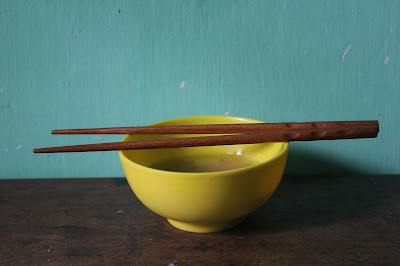Chopsticks are thin and small utensils made out of bamboo, plastics, steel, wood, etc. It always comes in pairs and has two parts – pointing part and thick part.
It is one of the most versatile utensils used in South Korea. It is everything for them –fork, spoon, pair of tongs, knife, and whisk.
However, for some who have not grown up using them would face some difficulties. So, here is the simple step-by-step guide.
Step
1:
Make your
dominant hand loose. Take one chopstick and place it in the valley between your
pointer finger and thumb. Balance it on your ring finger. This holding should
not move.
Step 2:
Take the second chopstick in the valley between
three fingers – thumb, pointer finger and middle finger along with the first
chopstick, but rest this one on your middle finger instead of your ring finger
and this should move.
Step 3:
To make it better, friendly and comfortable, use your thumb, index and middle fingers to grasp the second chopstick a bit more tightly. Move only the top stick up and down while eating or holding something.
However, chopsticks are an important and useful tool not only in South Korea but also in China, Japan and Thailand. So, if you happen to travel around these countries, you must know some basics of chopsticks. In Korea, chopsticks are not only used for eating, but also used for cooking, picking small pieces of vegetables, etc… Obviously, one can do many more things with chopsticks.
It is not only enough to know about the usage of the chopstick. There are Chopsticks Etiquettes while eating.
So here are some of the simple things you can do and you cannot do with chopstick when you are in chopstick country.
Be careful and look around if you are in doubt!
Never use chopsticks to say goodbye or welcome your friends or anybody, or say something like hi, or I am here, or please come, etc…,
Never use chopsticks to pick some food or eatables and pass to somebody, passing something chopstick-to-chopstick in the air is considered as very bad manners.
Never ever suck chopstick while eating or after you are done with eating. Also never hold chopsticks down ward and stab the food and eat. If you follow all these simple tips regarding chopsticks and the manners one can easily survive in the Chopstick Culture Country.










A girl named Nahyun taught me the use of this and I was mastered, but in my country we use that spoon and fork.
ReplyDelete